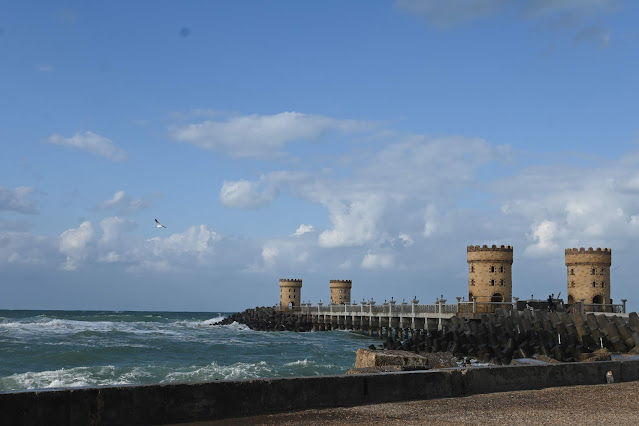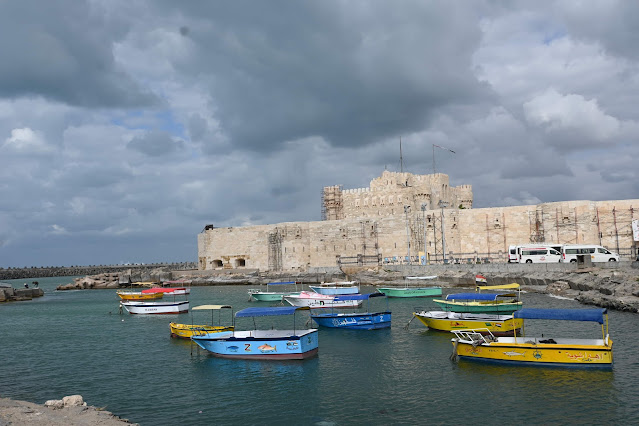Discover Princess Aziza Fahmy’s Palace in San Stefano, Alexandria – history, architecture, location, and why this hidden gem matters.
Princess Aziza Fahmy’s Palace in San Stefano, El Raml 1, Alexandria Governorate is one of Egypt’s most fascinating yet lesser-known architectural treasures. Built in the early 20th century, this grand palace blends European design influences with Egyptian aristocratic heritage. While many visitors to Alexandria rush to Montaza Palace or the Library of Alexandria, few realize that tucked near San Stefano stands a palace with equally rich stories of royalty, art, and history.
What Is Princess Aziza Fahmy’s Palace?
Princess Aziza Fahmy’s Palace is a historic royal residence in San Stefano, Alexandria, built in the early 20th century for Princess Aziza Fahmy, a member of Egypt’s royal family. It showcases European architectural styles and today stands as a cultural landmark in the Alexandria Governorate.
The palace represents the elegance of Alexandria’s aristocratic past and serves as a living reminder of Egypt’s royal connections to Europe.
Where Is Princess Aziza Fahmy’s Palace Located?
The palace is located in San Stefano, El Raml 1, Alexandria Governorate, Egypt, just steps away from the famous San Stefano Grand Plaza Mall and overlooking the Mediterranean Sea.
Exact location: San Stefano district, eastern Alexandria.
Nearby landmarks: San Stefano Grand Plaza, Stanley Bridge, Montaza Palace, and the Royal Jewelry Museum.
Accessibility: Easily reached by car, taxi, or Alexandria’s tram network.
History of Princess Aziza Fahmy’s Palace
Who Was Princess Aziza Fahmy?
Princess Aziza Fahmy (1886–1962) was a prominent figure in Egypt’s aristocracy, belonging to the influential Fahmy family that maintained close ties with the ruling dynasty. Her life reflected the blend of Egyptian traditions with European influences that characterized Alexandria during the late 19th and early 20th centuries.
When Was the Palace Built?
The palace was constructed in the early 20th century (circa 1920s), during a time when Alexandria was a cosmopolitan hub attracting royalty, merchants, and European architects.
The Fahmy family commissioned the palace as both a residence and a cultural statement, showcasing their prestige in Alexandria society.
Architectural Style of the Palace
Princess Aziza Fahmy’s Palace features a neo-classical European design, with ornate facades, marble staircases, and lush gardens, reflecting Alexandria’s cosmopolitan character.
Key Architectural Features
European influences: Italian marble, French windows, ornate ironwork.
Egyptian touches: High ceilings for ventilation, local stonework.
Layout: Spacious halls, multiple salons, and balconies overlooking the Mediterranean.
How Does It Compare to Other Palaces in Alexandria?
Unlike the more famous Montaza Palace, which has Ottoman influences, or the Royal Jewelry Museum’s palace with its baroque flair, Aziza Fahmy’s Palace is a subtle blend of European luxury and Alexandrian seaside charm.
Why Is Princess Aziza Fahmy’s Palace Important?
The palace is important for its historical, cultural, and architectural value, representing Alexandria’s aristocratic past and the city’s role as a Mediterranean cultural crossroads.
Cultural Significance
A symbol of Egypt’s royal past.
Reflection of Alexandria’s cosmopolitan society.
Connection to the city’s modern cultural identity.
Historical Value
The palace tells the story of Egypt’s early 20th-century elite, their lifestyles, and their architectural choices in an era of transformation.
Visiting Princess Aziza Fahmy’s Palace
Is the Palace Open to the Public?
Currently, public access is limited. Some sections are occasionally used for cultural or governmental purposes. Unlike Montaza or Ras El Tin Palace, Aziza Fahmy’s Palace is not always open for daily tours.
Tips for Visitors
Check with Alexandria Governorate’s cultural authorities before planning a visit.
Nearby Alexandria attractions like San Stefano Grand Plaza, Stanley Bridge, and Montaza are always open.
The palace’s exterior can still be admired from the outside and makes for stunning photography.
How to Get to Princess Aziza Fahmy’s Palace
The palace is in San Stefano, Alexandria, about a 20-minute drive from downtown Alexandria and easily accessible by car, Uber, or the city’s historic tram system.
Transport Options
By Car/Taxi: Convenient, especially from Alexandria Corniche.
By Tram: El Raml line towards San Stefano.
By Train: From Cairo, then taxi or tram within Alexandria.
By upper or kareem private trip .
Nearby Attractions You Shouldn’t Miss
If you’re visiting the palace, here are must-see nearby landmarks:
San Stefano Grand Plaza Mall – luxury shopping and dining.
Royal Jewelry Museum – another royal residence turned museum.
Stanley Bridge – iconic modern bridge over the Mediterranean.
Montaza Palace Gardens – expansive royal gardens and seaside views.
Local Guide: Best Things to Do Around San Stefano
Stroll the Corniche for sunset views.
Dine in seafood restaurants nearby.
Explore Alexandria’s royal heritage at Montaza and Ras El Tin Palaces.
Visit cultural sites like Bibliotheca Alexandrina.
Preservation and Future of the Palace
While the palace remains a landmark, ongoing conservation efforts are needed to preserve its structure and legacy for future generations.
The Alexandria Governorate and heritage organizations are working on plans to maintain the palace, though it has not yet received the same restoration attention as Montaza Palace.
































